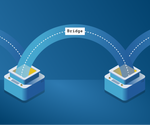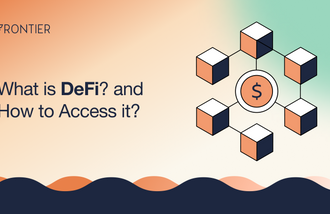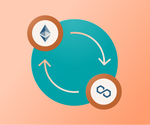

Decentralized Finance (DeFi) connotes a system that offers financial products to users without the need for the usual intermediaries like banks, government, or other go-betweens. In DeFi, financial assets and other complex financial tools are offered directly on a public blockchain where users from any part of the world irrespective of their background can interact with other parties through autonomous agents known as smart contracts.
DeFi rests on three fundamental pillars: decentralization, transparency, and accessibility. Decentralization in the sense that no central entity like Central Banks or Federal Reserves dictates the rules and regulations of how the protocol operates. Rather the mechanics and monetary policies of DeFi protocols are determined by smart contracts which are basically codes living on the blockchain— usually a public ledger like Ethereum, Binance Smart Chain, Avalanche, Polkadot, etc.
And since the activities on DeFi and its users are recorded on a public ledger, anyone can track and audit these activities without needing any special permission. This brings us to the last pillar which is accessibility. Anyone with a wallet address and funds can participate in the growing DeFi industry. There is usually no need for KYC or AML rules (except in special cases where DeFi protocols make provisions for institutional investors) or other restrictions making DeFi a permissionless turf for players.
Within the space of two years, the volume of collateralized value in various smart contracts jumped from a mere $800M to over $89B in October 2021.
Source: DeFi Pulse
Financial tools that are tradable in DeFi
The basic idea of DeFi as a sector of the broader crypto economy is to replace/convert traditional financial instruments to decentralized financial products. Products and services offered within the DeFi sector include loans, yield instruments, derivatives, insurance, perpetuals, P2P payment networks etc.
Most times, DeFi protocols offer their users higher returns for using their services. For instance, while inflation continues to rise and the traditional financial sector has entered the zero-interest era, liquidity pools in many of the leading DeFi protocols offer between 5 — 20% APY (annual percentage yield), dwarfing what their traditional counterparts offer. In fact, newly-launched DeFi protocols offer more insane incentives with some promising up to 100 — 1,000% APY.
However, a booming DeFi sector does not mean the industry is not fraught with risks. Several cases of smart contracts hack, exploitation, rug pulls and front running exist necessitating some of DeFi critics to label it a Ponzi scheme.
Popular DeFi apps and their use-cases
Uniswap, a decentralized exchange (DEX) is one of the most popular DeFi applications that allows its users to trade or swap tokens without needing to jump through the hoops of KYC or login in. Adopting an automated market maker (AMM) system, Uniswap facilitates trading through liquidity pools. Liquidity Providers or LPs supply liquidity to these pools (lets ETH/USDT pool) which are basically smart contracts. For their risks, LPs earn a share of the fees (0.3% for Uniswap) for every swap conducted on the pool. Crypto projects can as well list their token without needing the approval of anyone on Uniswap to start bootstrapping liquidity for their tokens. Sushiswap, Shibaswap, Pancakeswap, etc. are other examples of DEXs.
Aave, a decentralized money market and loan application allows lenders who need funds or liquidity to borrow loans while using their crypto as collateral. E.g Borrowing $500 USDT and supplying $750 worth $FRONT token. From the example above, the loan is collateralized to help safeguard against extreme cases of volatility where collateral drops below the loan amount leaving the borrowers in a worse condition. MakerDAO and Compound are other examples of decentralized lending apps.
Synthetix is a decentralized derivatives exchange where users can trade derivatives or “Synths” in the form of ERC-20 tokens that track and provide the returns of another asset without requiring you to hold that asset. E.g a synthetic MKR tracking the price of the real MKR token but without voting rights as the real MKR. Mirror Protocol is a DEX that allows for trading tokenized stocks like mAAPL, mAMZN, etc.
Yearn is an advanced set of smart contract protocols on the Ethereum blockchain that allow users to maximize their earnings or yields on crypto assets through lending and trading services. On Earn, one of the products of yearn, users deposit stablecoins: DAI, USDC, USDT, TUSD, sUSD, and wBTC. Yearn protocol will then look for the DeFi platforms on which they can earn the highest yield, like a robo-advisor.
In summary, with just less than five years since DeFi picked up the pace, solid use-cases ranging from decentralized exchanges, lending, flash loans, derivatives, yield farming, stablecoins, insurance, and now GameFi have emerged pushing DeFi towards a $500 billion industry.
So, how can you launch yourself into DeFi and enjoy all it proposes without needing to manage multiple applications? Your go-to destination and front seat for everything Crypto & DeFi and NFTs are Frontier!
Get the app from Playstore or Apple Store and create or import an existing wallet. Once you’re in, tap on the DeFi Tab at the footer or simply use our WalletConnect feature to help you enjoy a smooth DeFi experience.
About Frontier
Frontier is a Crypto & DeFi, NFT wallet where you can send, store & invest in 4,000+ crypto assets. Earn passive income on your crypto by staking or supplying assets in DeFi apps and exploring web 3.0 from a single place.
To stay up to date on our activities on Frontier, follow us on our social media platforms.
Website | Twitter | Telegram | Discord | Instagram | Youtube | IOS | Android

Head, Communications & Content





